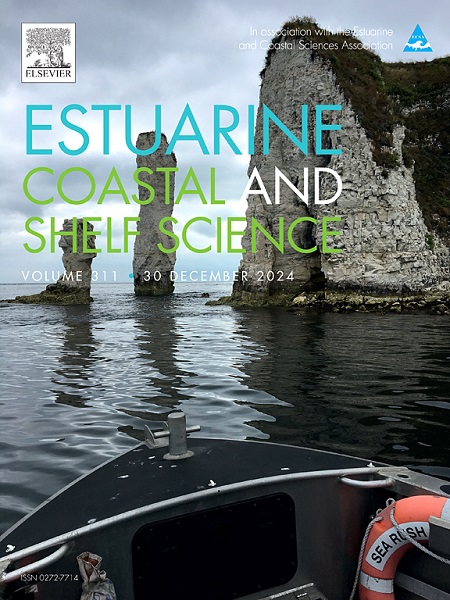Comparisons between tropical and temperate estuarine ichthyofaunas of western Africa and eastern South America
IF 2.6
3区 地球科学
Q1 MARINE & FRESHWATER BIOLOGY
引用次数: 0
Abstract
This review examines the probable fish colonization processes that occurred when plate tectonics and continental drift created the South Atlantic Ocean between Africa and South America, beginning in the Late Jurassic and gaining considerable momentum during the Cretaceous. Initial fish colonization is likely to have occurred by tropical fish families utilizing the western Tethys Sea arm around North Africa to gain access to the growing epicontinental seaways and coastal zones between Africa and South America. Speciation by some of these taxa would then have occurred such that the southern temperate waters on both continents became occupied by a less species rich cool-water ichthyofauna. The current numerical family status for African and South American tropical estuarine ecoregions is 55 and 63 respectively, whereas the numerical status for temperate ecoregions is 32 and 36 respectively. A Bray-Curtis similarity matrix was created for both fish families and species from the selected tropical and temperate ecoregions. These cluster analyses showed that fish families on either side of the Atlantic were similar but that the species were not. Only a very limited number of mainly large teleosts (e.g. Megalops atlanticus) and elasmobranchs (e.g. Carcharinus leucas) occur on both sides of the Atlantic. The current large crossing distances of >3000 km for most tropical coastlines, and >6000 km for some of the temperate coastlines, restrict fish species transfers across this large oceanic basin.

西非和南美洲东部热带和温带河口鱼类学的比较
这篇综述考察了板块构造和大陆漂移在非洲和南美洲之间形成南大西洋时可能发生的鱼类殖民化过程,该过程始于晚侏罗世,并在白垩纪期间获得了相当大的动力。最初的鱼类殖民化很可能是由热带鱼科利用北非周围的特提斯海西部支流,进入非洲和南美洲之间日益增长的大陆外航道和沿海地区而发生的。这些分类群中的一些物种形成之后,两大洲的南温带水域被种类较少的冷水鱼系所占据。目前,非洲和南美洲热带河口生态区的数目族地位分别为55和63,而温带生态区的数目族地位分别为32和36。对所选热带和温带生态区的两科鱼和鱼种建立了布雷-柯蒂斯相似性矩阵。这些聚类分析表明,大西洋两岸的鱼类科是相似的,但物种却不同。只有数量非常有限的主要是大型硬骨鱼(如大西洋巨鳍鱼)和板鳃鱼(如白鳍鱼)出现在大西洋两岸。目前,大多数热带海岸线的跨越距离为3000公里,一些温带海岸线的跨越距离为6000公里,这限制了鱼类在这个大型海洋盆地的转移。
本文章由计算机程序翻译,如有差异,请以英文原文为准。
求助全文
约1分钟内获得全文
求助全文
来源期刊
CiteScore
5.60
自引率
7.10%
发文量
374
审稿时长
9 months
期刊介绍:
Estuarine, Coastal and Shelf Science is an international multidisciplinary journal devoted to the analysis of saline water phenomena ranging from the outer edge of the continental shelf to the upper limits of the tidal zone. The journal provides a unique forum, unifying the multidisciplinary approaches to the study of the oceanography of estuaries, coastal zones, and continental shelf seas. It features original research papers, review papers and short communications treating such disciplines as zoology, botany, geology, sedimentology, physical oceanography.

 求助内容:
求助内容: 应助结果提醒方式:
应助结果提醒方式:


